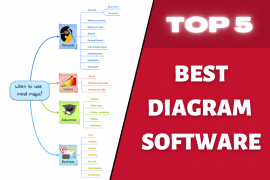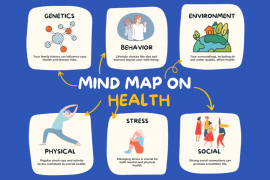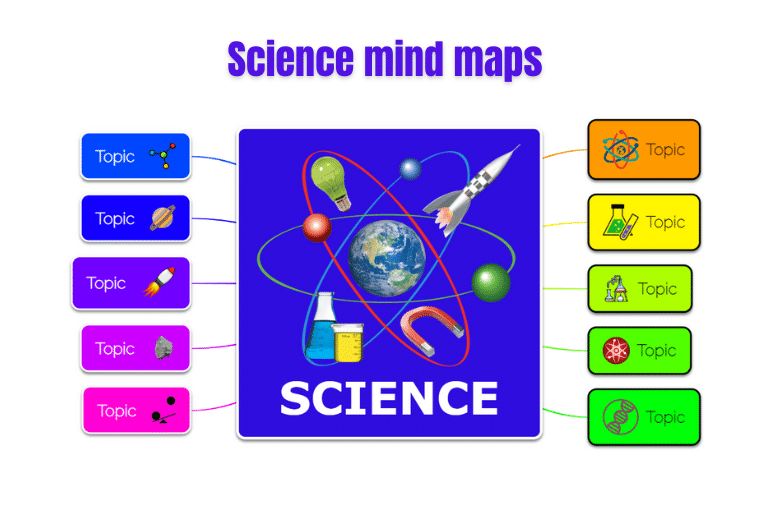
Introduction: Discover the Power of Mind Maps in Scientific Research
Are you wondering, “How do you make a science mind map?” The answer lies in unleashing the potential of education mind maps. These versatile tools play a vital role in organizing scientific research, transforming complex ideas into digestible forms. Mind maps foster a new approach to education, especially in the realm of science.
Understanding Mind Maps: The New Age Tool for Researchers
Let’s start by decoding the concept of mind maps. Conceived by Tony Buzan in the early 1970s, mind maps are a form of note taking that starts with a central concept in the middle of the page. From this central point, branches draw out, capturing related ideas and principles.
The neuroscience behind effective mind mapping is fascinating. These maps mirror the brain’s natural tendency to link concepts, creating a focus for creativity and meaningful learning. And there are lots of mind map types to choose from.
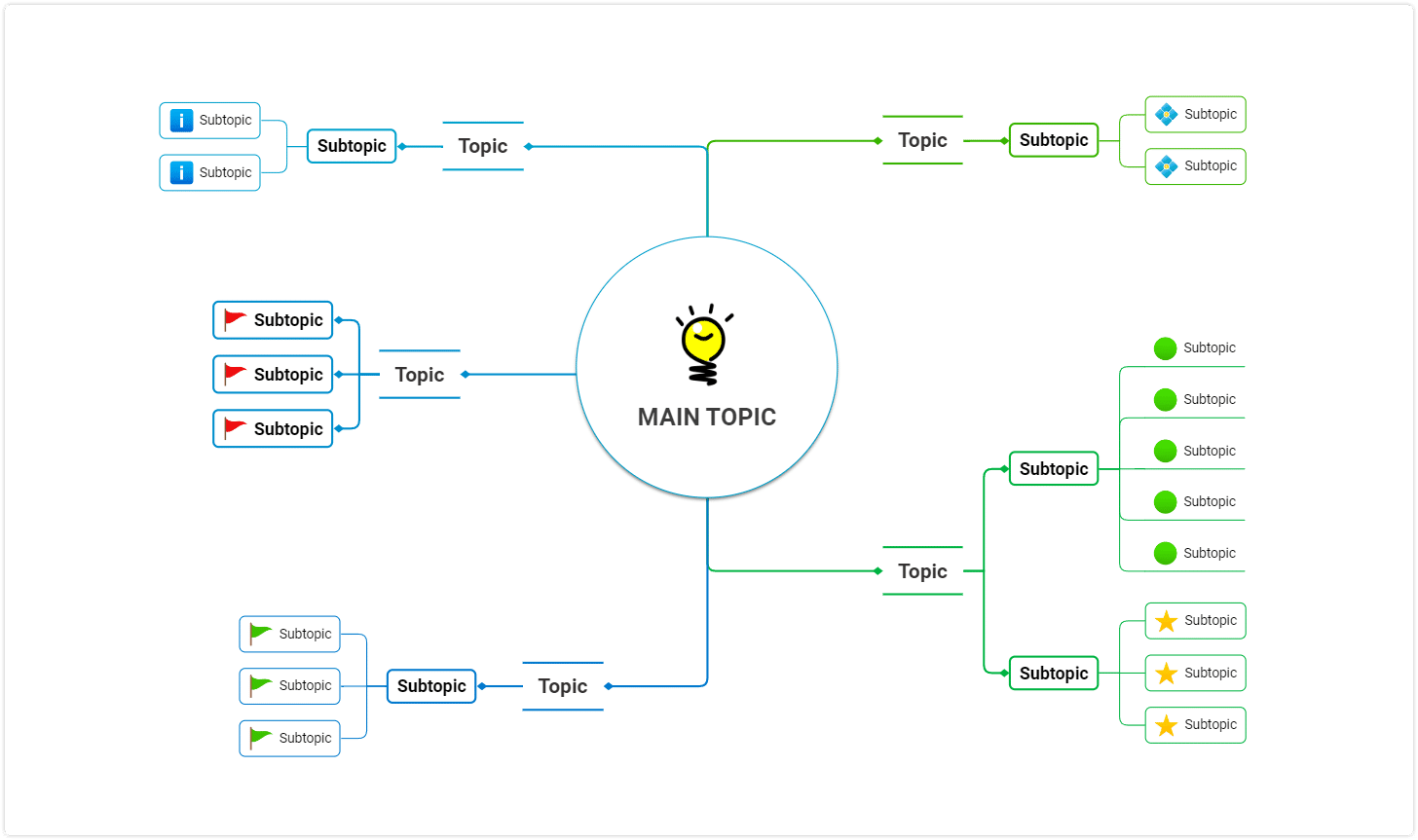
Reaping the Benefits: Why Mind Maps are a Boon for Scientific Research
Let’s explore how science mind maps enhance clarity and comprehension. Complex topics like biology and chemistry become interesting when mapped out, as the connections between elements are visually represented. If you’re a student studying in college using mind maps, you’ll find that they serve as a catalyst for memory and recall. This is due to the brain’s ability to retain information better when it’s associated with images, sounds, and spatial relationships.
Furthermore, mind maps stimulate creativity and innovation. As you draw out your map, you’re free to add illustrations, words, and even sounds that help explain the concepts. This creative process can make even the most tedious material exciting and promote a deeper understanding of the subject.
Creating Your Science Mind Map: A Step-by-Step Guide
The anatomy of an efficient mind map begins with a central concept. This might be a broad topic like “plants” or a specific scientific event. Then, straight lines extend out, branching into subtopics. Each branch represents a different aspect of the central idea, and additional lines form sub-branches for more detailed information. Mind map templates can help get you started.
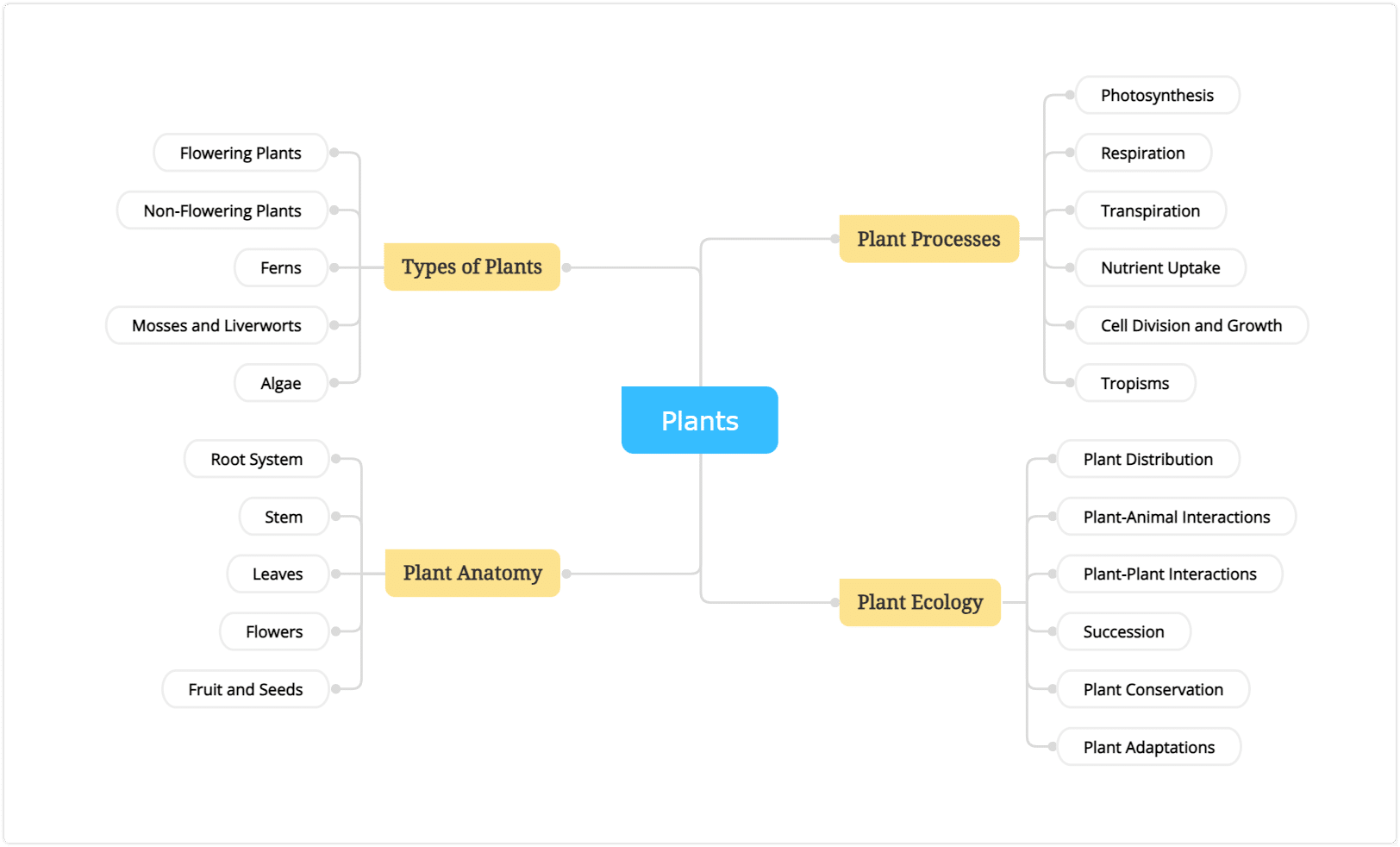
Transforming your research ideas into a mind map is a dynamic process. Start with brainstorming, allowing ideas to flow freely. This might seem chaotic at first, but once you start drawing your mind map, you’ll find connections and patterns. Online resources offer a plethora of mind map examples for students to learn from and adapt.
Leveraging digital tools for mind mapping can take your notes to the next level. There are several free and paid applications that offer customizable mind map templates, easy editing, and the ability to link additional resources. These tools can make the process of creating a mind map even more straightforward and effective.
Mind Maps in Action: Integrating Mind Maps in Your Research Process
From initial research and hypothesis building to presenting your findings, mind maps are integral to every step of the scientific research process. When building your hypothesis, mind maps help you capture and organize your thoughts. They enable you to visually outline the connections between different elements, making it easier to formulate a comprehensive hypothesis.
Designing experiments with the mind mapping approach ensures that no details are overlooked. From identifying the variables and controls to outlining the procedural steps, a mind map provides a clear and concise overview of your experiment.
After conducting your experiment, mind maps simplify data analysis. They allow you to link data points and visualize patterns, leading to more insightful conclusions. And when it comes to presenting your findings, a well-constructed mind map can efficiently communicate your process, results, and implications, making your research more accessible to your audience.
Mind maps can help whether you’re a budding biologist creating a biology mind map outlining rainforest animals.
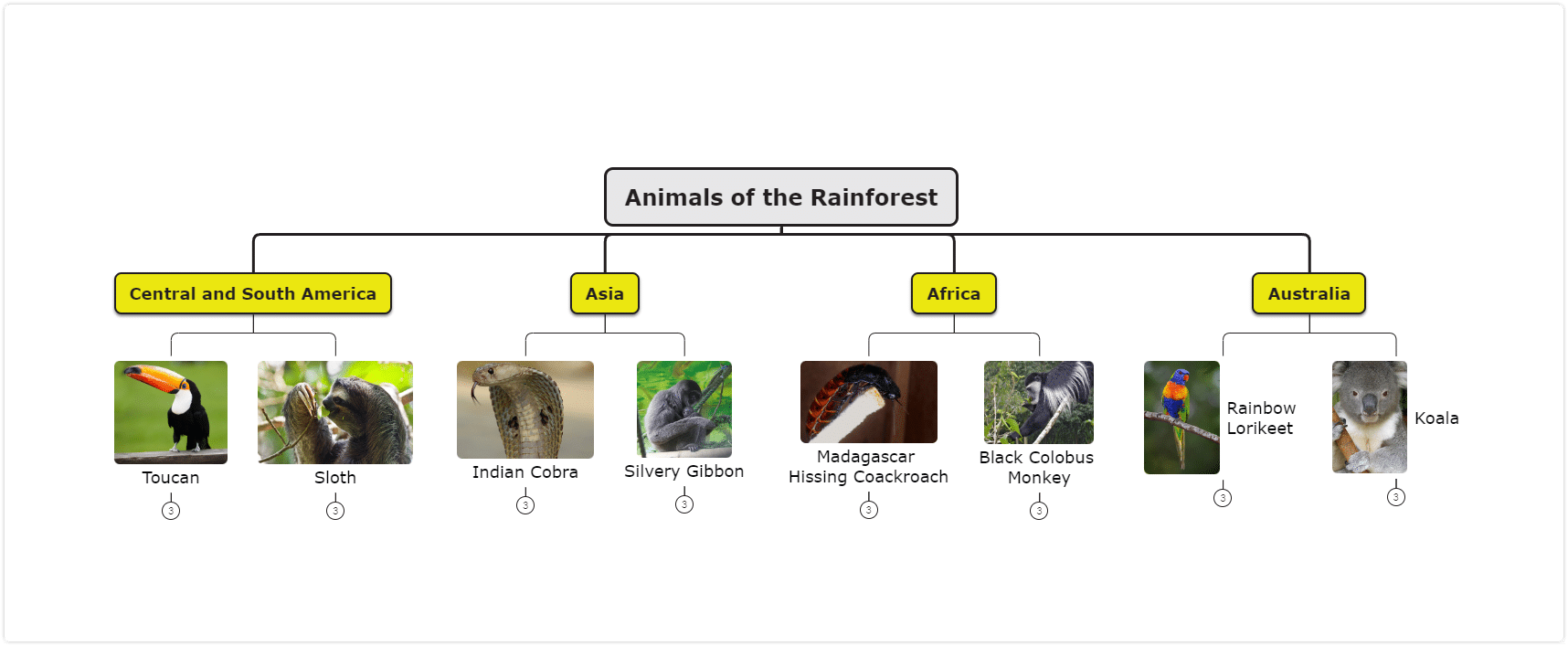
Or a climate scientist looking to analyze one of the world’s leading problems, climate change.
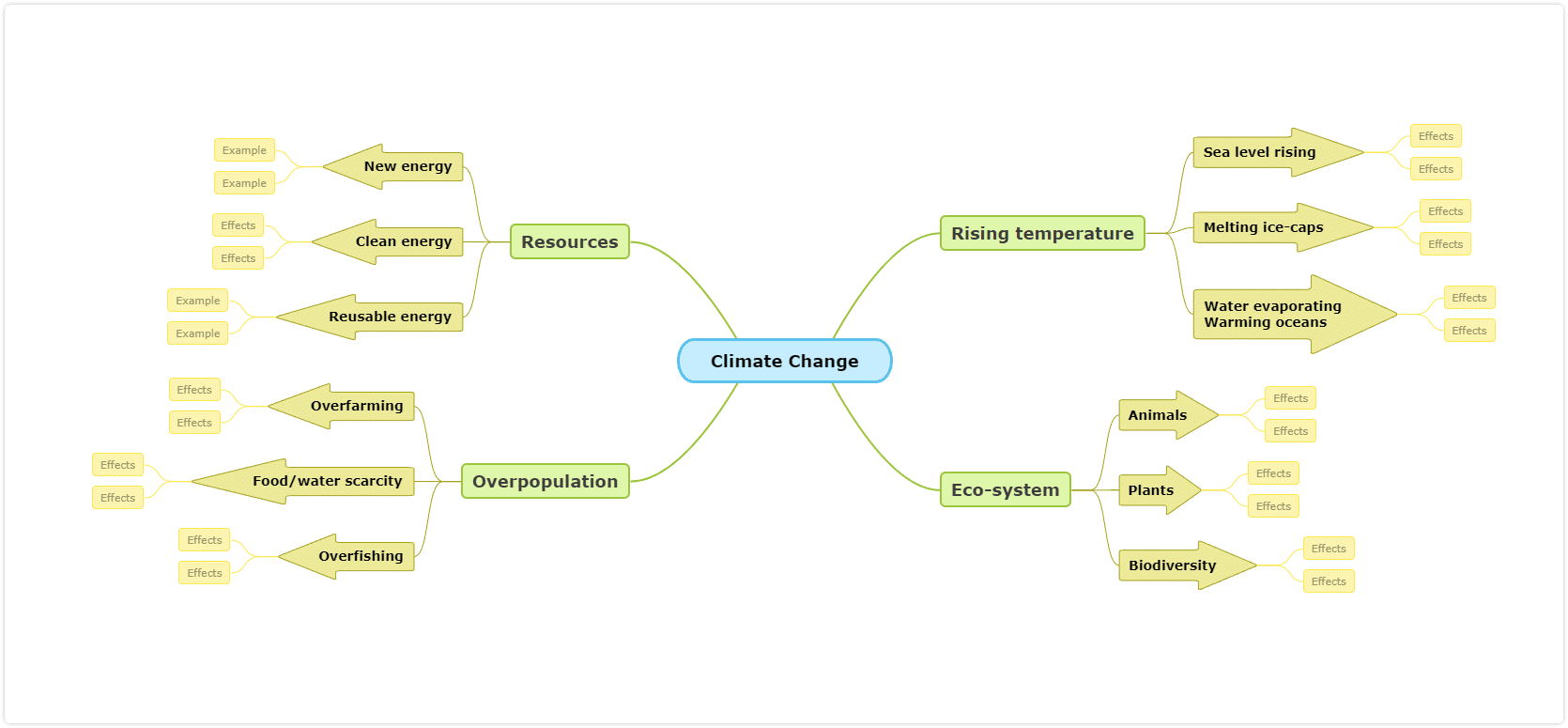
Or a physics student organizing your notes on energy, mind maps are a powerful tool for enhancing comprehension, memory, and creativity. They transform the often boring task of note-taking into a stimulating, engaging process. Give it a try, and experience how mind maps can revolutionize your approach to scientific research.
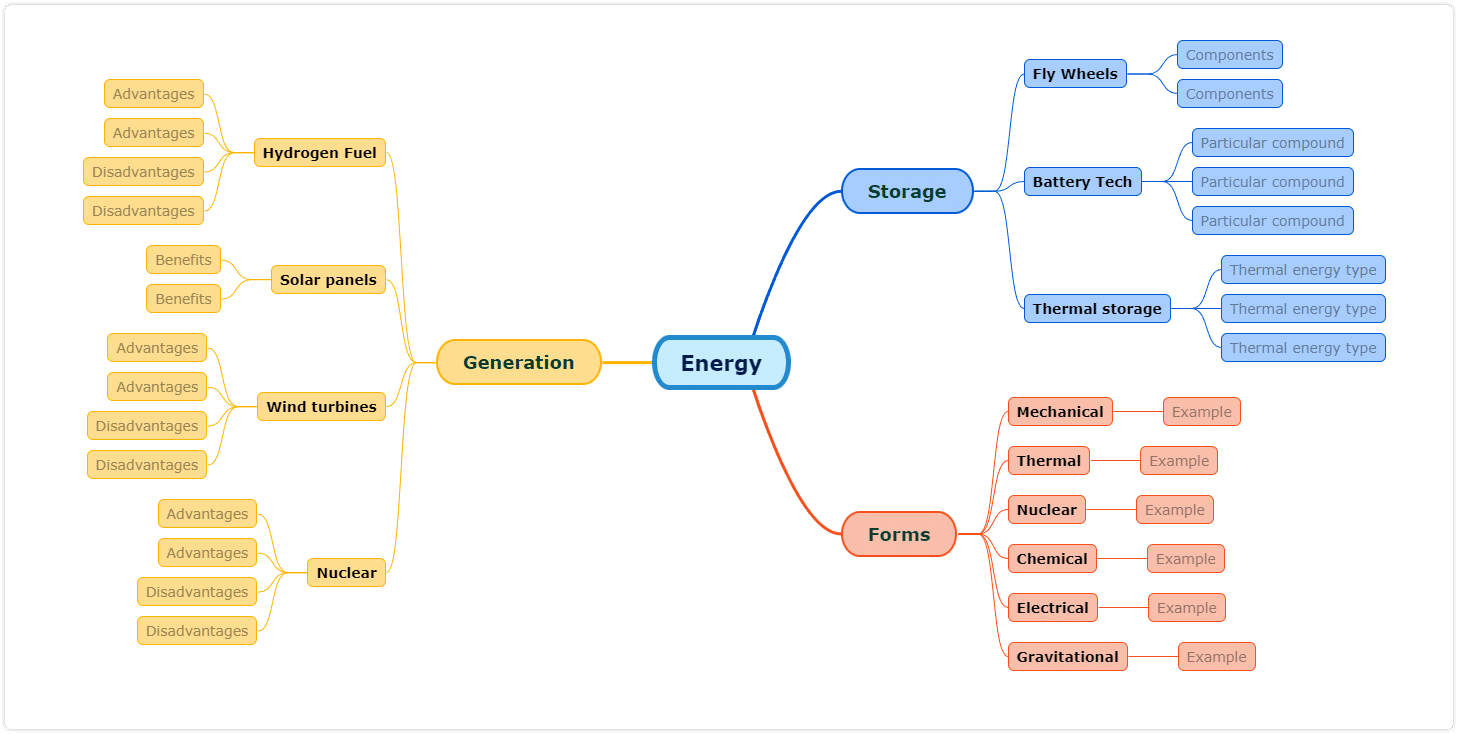
Beyond the Present: The Future of Mind Maps in Scientific Research
As we look forward, the role of mind maps in scientific research will only expand, especially with the rapid advancement of technology. Embracing technological advances for mind mapping will enable more effective visualization, interaction, and collaboration. New digital tools will offer more customization, seamless integration with other software, and the ability to handle more complex mind maps.
This evolution opens up exciting possibilities. We can envision the future of scientific research with mind maps incorporating elements like real-time collaboration, AI assistance, and advanced data integration. The line between mind maps and other forms of data visualization (read more about what is data visualization) might even blur, leading to more integrated, comprehensive tools for understanding and solving scientific problems.
One of the best things about mind maps is how easy they are to create, especially with software like Mindomo. Not only can you leverage the power of dozens of pre-made, science mind map templates. But you can also customize them to your heart’s content, share them with others, and more.
Wrapping Up: The Game-changing Role of Mind Maps in Science Research
Recapping our journey, we’ve seen how mind maps, with their roots in our understanding of brain function and learning, have revolutionized note taking and idea organization in scientific research. From decoding complex concepts to boosting recall and creativity, mind maps serve as a game-changer in education, particularly in science-related fields.
So, whether you’re a student juggling myriad concepts in your biology class or a seasoned researcher planning your next big project, mind maps provide a clear, creative, and efficient way to manage your tasks. They empower you to take charge of your scientific research, making the process not only manageable but also engaging.
In the spirit of continuous learning and growth, I encourage you to experiment with this powerful tool. Leverage it to see your ideas from a fresh perspective, find connections you hadn’t considered, and unlock your potential for innovation. And as you do so, remember that every great mind, like every great map, begins with a single idea. So, empower your scientific research with mind maps and embark on your journey of discovery!
Keep it smart, simple, and creative!
The Mindomo Team


